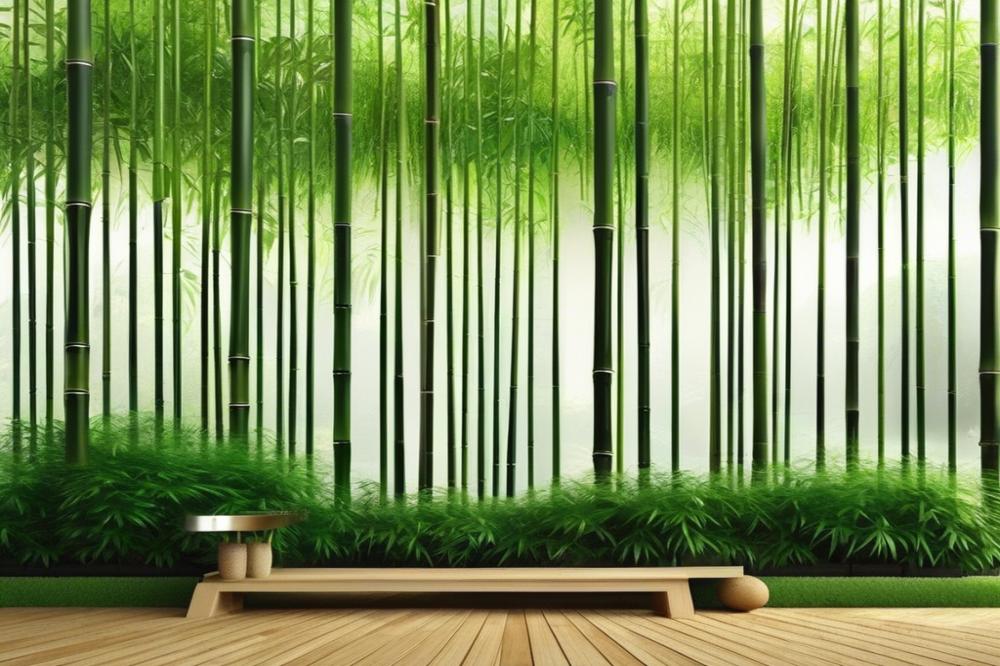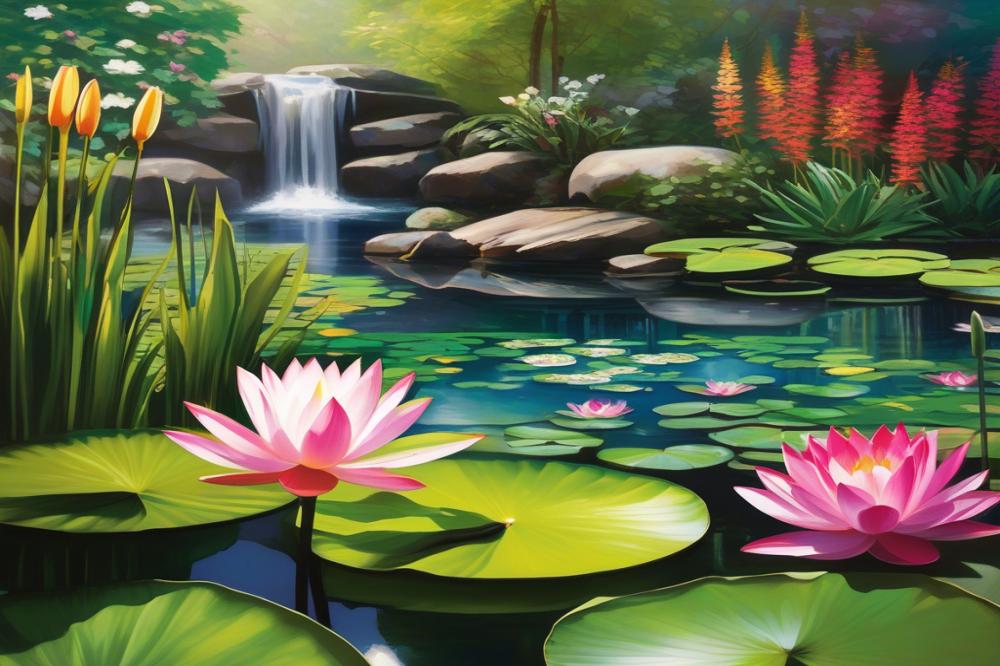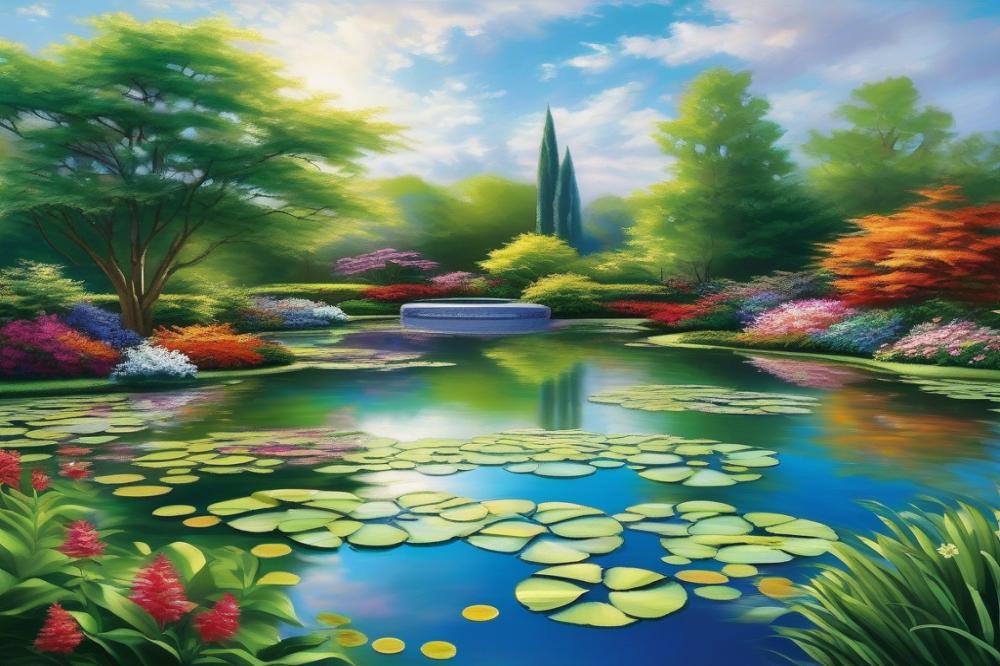Incorporating Bamboo into Japanese Garden landscaping
Japanese Garden landscaping captivates the imagination with its serene and organic beauty. Careful design blends aesthetics and function, creating spaces that invite reflection and tranquility. Each element serves a purpose, fostering a connection to nature. Natural materials play a crucial role in this process, enhancing the environment while promoting sustainability.
The use of different plant species can transform a garden into a living work of art. Selecting the right plants is essential for maintaining balance and harmony. Among these choices, one versatile element stands out. This grass, celebrated for its varied textures and heights, easily adapts to various settings. Its ability to offer a privacy screen enhances any outdoor area, contributing to a peaceful retreat.
Incorporating Bamboo in a garden design can elevate its charm. Many consider the versatility of this plant, as it complements both traditional and contemporary styles. Whether used in a Zen garden or as part of Asian landscaping, it introduces a unique flair. Its low maintenance requirements make it appealing for gardeners of all skill levels.
Through careful selection and placement, bamboo can create a striking focal point or serve as a subtle backdrop. With its lush appearance, it helps establish a dynamic environment that encourages relaxation. Thoughtful integration of this natural material supports the overall vision of a well-designed Japanese Garden.
Bamboo in Japanese garden design
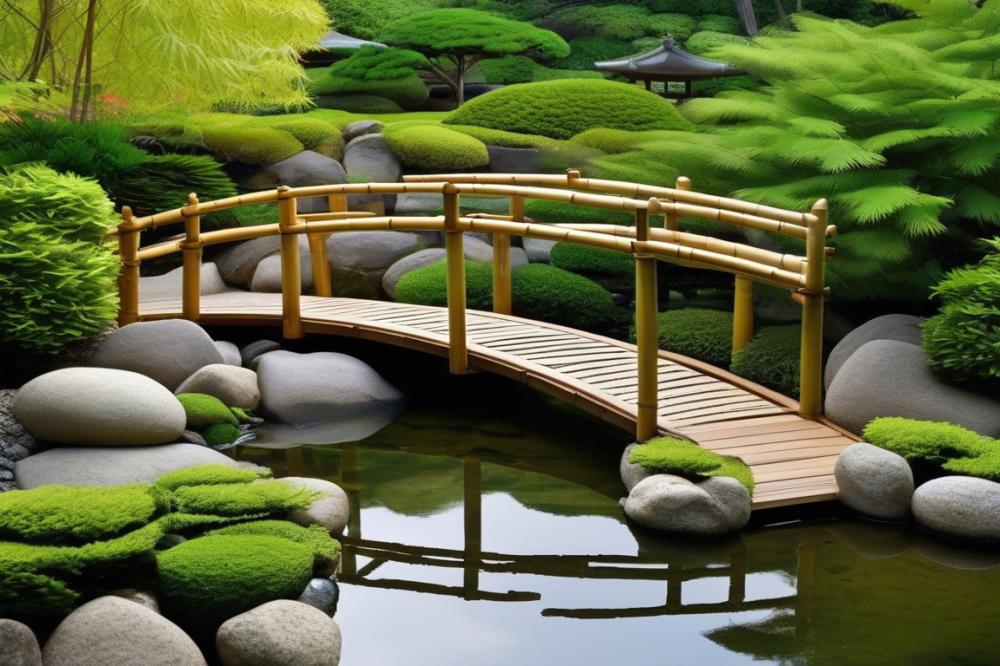

In Japan, bamboo holds deep cultural significance. It represents strength, flexibility, and resilience. This natural material is also linked to purity and simplicity. For centuries, gardens that include this plant reflect the principles of harmony and balance inherent in Japanese aesthetics.
When considering landscaping with bamboo, various species are suitable for different designs. Phyllostachys nigra, known as black bamboo, stands out with its striking color. Another option is Fargesia, which offers a clumping growth habit. Clumping types provide a more contained design, ideal for small spaces. Each bamboo species brings its unique characteristics to the garden.
Design Versatility
Landscaping with this plant allows for creative freedom. Garden designers often use them as borders or screens. They are excellent for creating a privacy screen, blocking unwanted views while still allowing light to filter through. Pathways lined with bamboo create serene walking experiences, leading visitors deeper into a Zen garden.
Additionally, this plant can serve as a focal point. Tall, swaying stalks can guide the eye towards a beautiful feature, like a water element or stone lantern. The gentle rustling of leaves in the wind adds a soothing sound to any outdoor space. Incorporating such plants not only enhances beauty but also complements the idea of sustainability in Asian landscaping.
Maintenance of these plants can vary, but with proper care, they thrive. Regular trimming helps manage growth and keeps the look tidy. Ensuring proper spacing among the species prevents overcrowding. This thoughtful approach creates an inviting and balanced atmosphere. Overall, utilizing this plant in garden design elevates the entire landscape.
Types of Bamboo for Zen Gardens
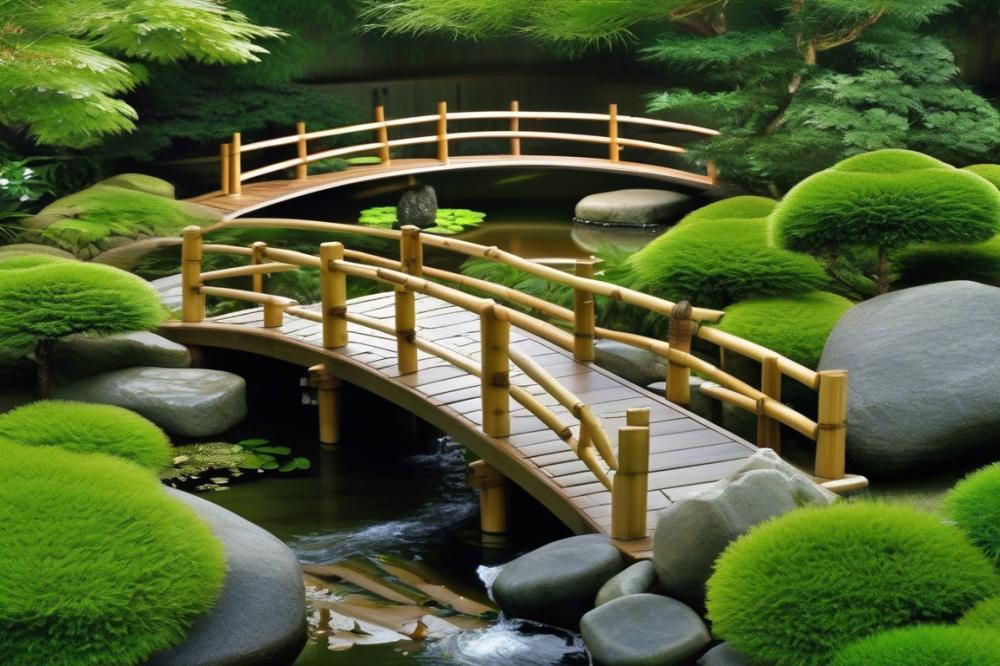

Zen gardens thrive on simplicity and tranquility. Choosing the right bamboo species can elevate the overall aesthetics. Consider species like Bambusa oldhamii or Fargesia robusta. Both provide graceful vertical growth and a soothing backdrop in any landscaping project. Their slender stems sway gently in the breeze, adding a calming element to your space.
When selecting bamboo for your Zen garden, it’s important to think about several factors. First, consider the climate. Some species thrive in warmer regions, while others prefer cooler conditions. The maintenance required can vary significantly as well. Low-maintenance options can contribute to a more stress-free garden design.
Sustainability is another key aspect of choosing bamboo. Many types are fast-growing and renewable, making them an eco-friendly choice. Their ability to act as a natural privacy screen adds functional beauty to outdoor areas. This can create secluded spaces perfect for meditation or reflection.
Bamboo seamlessly complements stone and gravel elements found in Rock gardens. The contrast between the green foliage and the earthy tones of natural materials creates a harmonious look. Pathways lined with this plant can guide visitors through your garden while enhancing the overall design. Using bamboo can also soften hard surfaces, making the entire landscape feel more inviting.
Incorporating a variety of species can enrich the overall texture. Some may provide height, while others remain low to the ground. This layering effect helps create depth within the landscape. Ultimately, the right selection fosters a serene atmosphere that reflects the essence of Asian landscaping.
Aesthetics of Bamboo in Landscaping
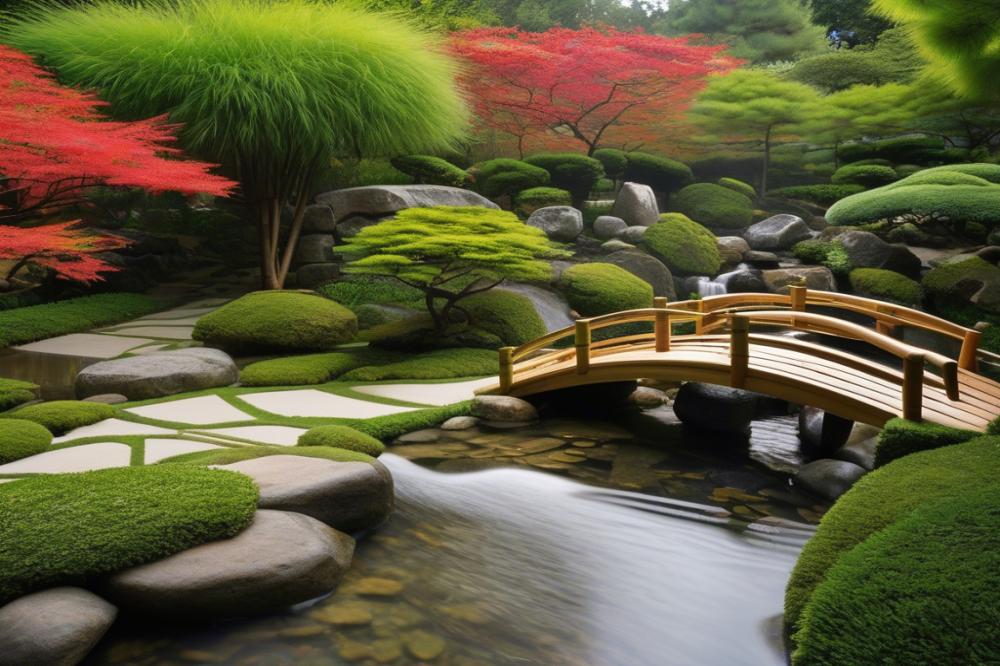

When considering Asian landscaping, the visual appeal is one of the most captivating characteristics. Tall, slender stalks bring a unique elegance that enhances the overall garden design. Various bamboo species add diverse colors and textures, creating a tapestry of life. The soft rustle of leaves in the breeze adds an auditory dimension that many find calming.
Seasonal changes play a significant role in the aesthetics of a garden. In spring, fresh greenery bursts forth, providing a vibrant backdrop. Summer showcases lush foliage that creates natural shade, perfect for a Zen garden ambiance. As autumn arrives, golden hues emerge, complementing the earthy tones of other plants. Even in winter, the stark presence of bamboo can lend a feeling of structure against a snowy backdrop.
Combining bamboo with other natural materials enhances its timeless beauty. Stones and gravel provide contrast, creating pathways that invite exploration. Pairing it with flowering plants can soften the overall look and add bursts of color. These pairings also contribute to environmental sustainability, making the garden eco-friendly.
Many gardeners utilize bamboo as a natural privacy screen. It can create secluded spaces, allowing for peaceful contemplation. In urban settings, this function is especially valuable. Architects and designers can greatly benefit from incorporating bamboo into their projects, as it offers both style and practicality.
Low-maintenance attributes make this grass a practical choice for many gardeners. While some varieties grow quickly, others are more restrained, allowing for controlled growth. Understanding the specific bamboo species is crucial. This knowledge aids in selecting the right plants that fit your vision and maintenance preferences.
Sustainability and Bamboo
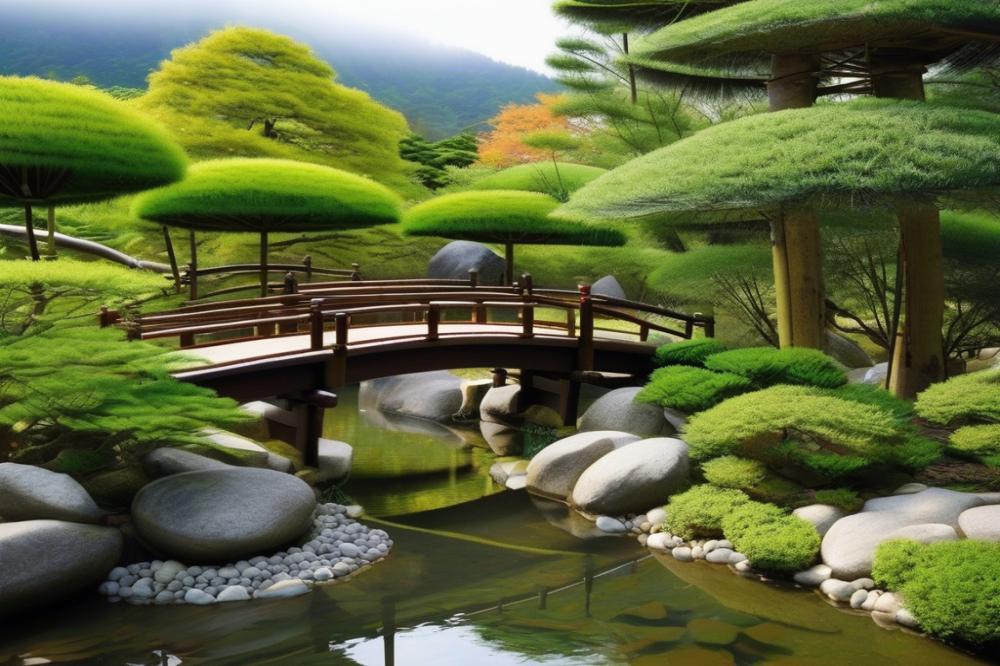

Environmental Benefits of Using Bamboo
Using bamboo in landscaping offers significant environmental advantages. It grows rapidly, reaching maturity in just a few years. This fast growth rate makes it a renewable resource. As a plant, it also absorbs carbon dioxide and produces oxygen at a high rate. Such qualities contribute positively to the ecosystem. Furthermore, bamboo helps prevent soil erosion with its extensive root system. Choosing it for your garden can aid in maintaining soil health.
Bamboo as a Sustainable Alternative for Garden Materials
Homeowners seeking eco-friendly options will find that bamboo serves as a great choice. Many traditional materials often involve extensive harvesting practices. In contrast, this plant can be harvested without killing the roots, allowing for continual growth. Its strength and lightweight nature are also appealing for various garden design projects. Several bamboo species offer diversity in aesthetics, from tall varieties that create a natural privacy screen to lower-growing types perfect for ground cover.
Tips for Sourcing and Maintaining Sustainable Bamboo
Finding sustainable bamboo involves looking for local suppliers who prioritize eco-friendly practices. Check labels and certifications that indicate responsible sourcing. In terms of maintenance, choose hardy varieties that are suited for your climate. Regular trimming can keep the growth in check, ensuring a neat garden appearance. Additionally, monitor for pests and diseases, treating them as needed to preserve your garden’s beauty. Employing these strategies will help create a flourishing Zen garden that remains vibrant over the years.
Creating Privacy Screens with Bamboo
Designing Effective Privacy Screens Using Bamboo
Creating a privacy screen using bamboo can bring a sense of seclusion to any space. Choose the right bamboo species for desired height and density. Some varieties grow tall and thick, making them excellent for shielding views. Integrating these plants within your garden design enhances both privacy and aesthetics. A well-placed screen can transform an ordinary area into a peaceful retreat. Consider planting in clusters or rows to form a solid barrier against prying eyes. Remember to think about the layout in relation to sunlight and surrounding plants. This strategy will ensure that your privacy screen remains not only effective but also visually appealing.
Benefits of Bamboo as a Natural Privacy Solution
Using bamboo for privacy creates a natural-looking barrier that complements Asian landscaping. Its rapid growth makes it a great choice for those seeking quick results. Natural materials in the garden promote tranquility, a principle at the heart of Zen garden design. Furthermore, bamboo is sustainable, making it an eco-friendly option for your landscape. It requires less water than many traditional shrubs, thus supporting a more efficient irrigation system. In addition, this plant offers year-round greenery, ensuring your space remains vibrant regardless of the season. Overall, bamboo provides a robust, aesthetically pleasing, and environmentally conscious way to enhance privacy.
Maintenance Tips for Bamboo Privacy Screens
Caring for bamboo privacy screens is straightforward, but a little effort goes a long way. Regular watering is vital, especially during dry periods. Mulching around the base can help retain soil moisture and reduce competing weeds. Pruning is essential to maintain both height and thickness. If bamboo begins to spread too aggressively, consider a root barrier to control growth. Monitoring for pests will keep your privacy screen healthy. With consistent maintenance, your natural privacy solution can beautify your garden for years to come.
Maintenance of Bamboo in Gardens
Regular care is essential for healthy growth in any garden. When it comes to incorporating this versatile grass into your landscape design, attention to detail is key. Pruning is one of the most crucial aspects of maintenance. Cutting back old or dead canes allows more sunlight and air to reach new growth. This practice not only improves appearance but also enhances vitality.
Watering effectively supports root development. New shoots require ample moisture, especially in their early stages. However, standing water can cause problems. It’s vital to create a balance. Not every species has the same water needs, so doing a bit of research into specific bamboo species is worthwhile. The right level of hydration promotes lush foliage and strengthens the natural aesthetics of the Zen garden.
Common Issues and Pests Affecting Bamboo
Even with the best care, issues may arise. Diseases like root rot can affect these plants when the soil is too moist. Leaves can also suffer from discoloration due to insufficient sunlight. Identifying and addressing these problems promptly is crucial. Insects, however, can be more problematic. Aphids and spider mites are common pests that invade bamboo. Regular inspections can catch these pests early, minimizing damage.
Organic solutions work well to combat many pest issues. Introducing beneficial insects or using insecticidal soap can be effective strategies. Maintaining healthy plants naturally helps to resist attacks. Consider the environment in which your bamboo grows. Ensuring it thrives in its climate is vital for keeping pests at bay.
Long-Term Care Strategies for Sustainability
Caring for bamboo is not just about quick fixes. It requires ongoing attention for long-term sustainability. Applying mulch around the base conserves moisture and improves soil structure. This practice reduces the need for frequent watering and enhances nutrition. Using natural materials, such as grass clippings or leaves, promotes a healthy ecosystem.
As plants mature, they may outgrow their space. Some species can grow quite large, needing to be contained for effective landscaping. Consider using barriers to manage their spread. A well-placed privacy screen can enhance the garden space, creating a tranquil area for relaxation. Properly managing growth forms a balance between beauty and functionality in Asian landscaping.
Regular inspection should become part of your gardening routine. Look for any signs of distress or decline. Addressing problems at their onset can prevent larger issues from developing. By investing time in ongoing maintenance, a thriving bamboo landscape can be achieved. Enjoy the process as it enhances your overall garden experience.
Final Thoughts on Bamboo in Japanese Garden Landscaping
Bamboo plays a significant role in Japanese garden landscaping. It adds both beauty and practicality. This wonderful plant can create stunning focal points or act as a serene backdrop, enhancing the overall atmosphere. Its versatility makes it an ideal choice for various garden designs.
Consider incorporating bamboo into your outdoor space. By doing this, you can enjoy its elegance and functionality. The right variety can provide privacy or create a tranquil soundscape when the wind flows through the leaves. Many gardeners appreciate how it can complement other elements like water features and stone paths, leading to a balanced look.
In essence, bamboo harmonizes perfectly with the natural environment. The connection to nature is vital when planning your garden. Embracing this plant can elevate your design while encouraging wildlife and promoting a peaceful retreat. As you plan your landscaping, think about how bamboo might fit into your vision.
Ultimately, choosing to include this remarkable plant can enrich your garden experience. Its different shades and textures can transform any outdoor setting. Incorporating bamboo is a journey to explore the beauty of nature and design. Make the choice to cultivate harmony in your space.

